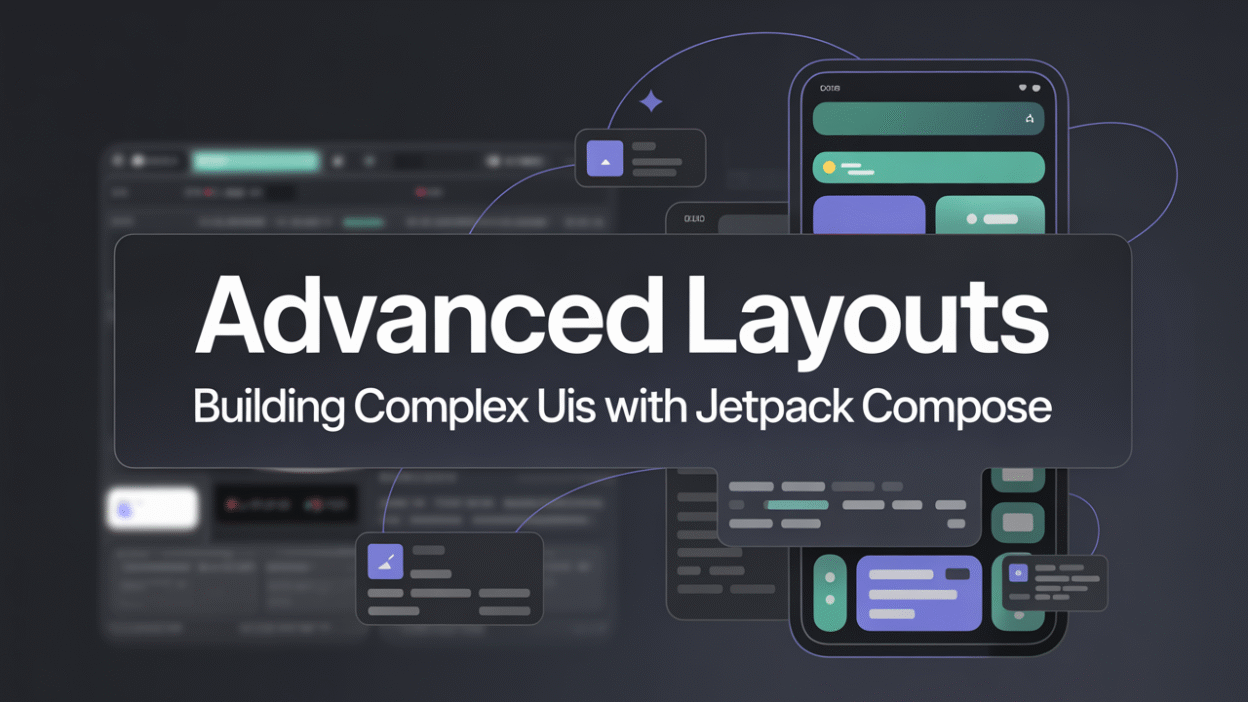Building complex user interfaces (UIs) in Android development has always been a challenge, especially when balancing performance and maintainability. Jetpack Compose, Google’s modern toolkit for crafting native UIs, introduces advanced layout techniques that simplify this process significantly . In this blog post, we’ll delve into how Jetpack Compose enables developers to construct intricate UIs with efficiency and elegance.
Understanding the Layout Phase in Jetpack Compose
At the heart of creating complex UIs in Jetpack Compose lies an understanding of the layout phase and constraints. Unlike traditional XML-based layouts, Jetpack Compose allows developers to define UI components declaratively, which means the UI is built by describing what should be displayed rather than how it should be constructed . This approach streamlines the creation of complex designs by focusing on the outcome rather than the implementation details.
Leveraging ConstraintLayout for Complex Designs
One of the standout features in Jetpack Compose for building complex UIs is the ConstraintLayout. This powerful tool enables developers to define constraints between UI elements, facilitating the creation of sophisticated layouts without deep nesting . By reducing the depth of the UI hierarchy, ConstraintLayout not only enhances performance but also simplifies debugging and maintenance .
For instance, consider a scenario where multiple UI elements need to be aligned in a non-linear fashion. With ConstraintLayout, you can specify relationships between these elements, ensuring they adapt appropriately to different screen sizes and orientations. This flexibility is crucial for developing responsive and dynamic applications.
Subcompose Layouts: Enhancing Flexibility
Another advanced concept in Jetpack Compose is subcompose layouts. These allow developers to create reusable UI components that can dynamically adjust their content based on the available space. Subcompose layouts are particularly useful when dealing with lists or grids where items may vary in size and complexity . By leveraging subcompose capabilities, developers can ensure that their UI remains efficient and visually consistent across various devices.
Intrinsic Measurements: Optimizing Performance
Intrinsic measurements play a vital role in optimizing the performance of complex UIs. They enable Jetpack Compose to calculate the size of UI elements more efficiently, leading to faster rendering times. When designing complex layouts, intrinsic measurements help in minimizing unnecessary recalculations, thus enhancing the overall responsiveness of the application .
Best Practices for Building Complex UIs
When working with Jetpack Compose, there are several best practices to keep in mind while building complex UIs:
-
Modularize Your Code: Break down your UI into smaller, manageable components. This approach promotes reusability and makes it easier to test individual parts of your UI.
-
Use State Management Wisely: Effective state management is crucial for maintaining the integrity of complex UIs. Utilize Jetpack Compose’s state management tools to ensure that your UI updates correctly in response to user interactions or data changes .
-
Optimize for Performance: Always consider the performance implications of your design choices. Use flat hierarchies and avoid unnecessary recompositions to keep your app running smoothly .
-
Leverage Built-In Components: Jetpack Compose provides a rich set of built-in components that can be customized to fit your needs. Familiarize yourself with these components to save time and reduce code duplication.
By embracing these best practices and leveraging the advanced layout features of Jetpack Compose, developers can craft complex UIs that are both performant and maintainable. As the ecosystem continues to evolve, staying updated with the latest tools and techniques will be essential for delivering high-quality Android applications .
In conclusion, Jetpack Compose represents a significant leap forward in Android UI development, offering developers the tools needed to build sophisticated interfaces with ease. Whether you’re a seasoned developer or just starting out, mastering these advanced layout concepts will undoubtedly enhance your ability to create compelling, user-friendly applications.


